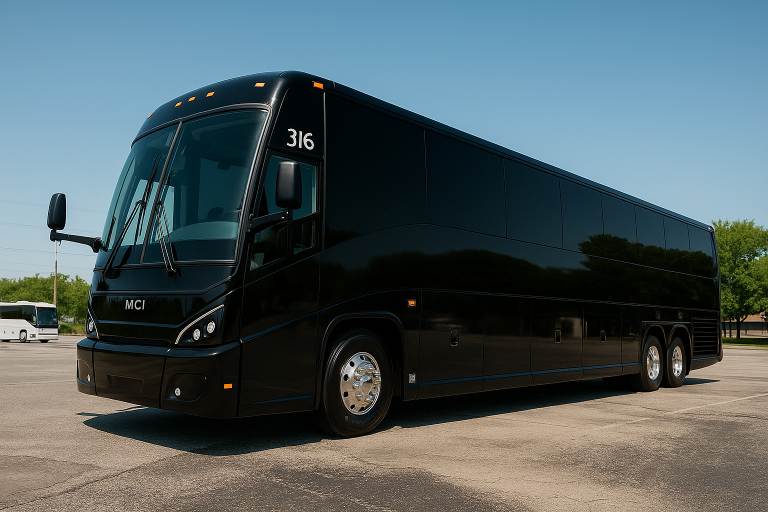- Charter Bus Rental Trenton /
- Blog /
- How to Stop Sickness on a Trenton Charter Bus
How to Stop Sickness on a Trenton Charter Bus
Motion sickness can be a real trip-ruiner, especially if your group is heading out for a day of fun at the New Jersey State Museum or planning an epic multi-day journey across Mercer County. At Charter Bus Rental Trenton, we've helped thousands of groups arrive happy and healthy—and we know exactly what it takes to keep queasy stomachs in check. Read on for actionable tips, remedies, and smart travel strategies that will help your whole group enjoy the ride!

Quick Answer
To stop motion sickness on a bus, choose a seat near the front and focus on the horizon, keep your head still and air fresh, avoid reading or screens, snack lightly (ginger helps), stay hydrated, and use proven remedies like acupressure bands or over-the-counter medications if needed.
What Is Motion Sickness?
Motion sickness happens when your brain gets mixed signals from your eyes and inner ears about movement. On a moving vehicle, your body senses motion, but if your eyes are focused inside the bus (like reading or looking at your phone), your brain thinks you’re still. This sensory mismatch triggers symptoms like nausea, dizziness, sweating, headaches, and sometimes vomiting.
What Causes Motion Sickness?
Motion sickness is most common in children ages 2-12, pregnant women, and people prone to migraines, but anyone can get it under the right circumstances. Bumpy roads, winding routes through places like the Delaware River Valley, stuffy air, strong odors, and activities like reading or using digital devices all increase risk. Even seasoned travelers can feel sick if they’re tired, anxious, or haven’t eaten properly before departure.
6 Tips to Prevent Motion Sickness
Pick the Right Seat
On a charter bus, the smoothest ride is usually near the front, over the wheels. Sitting here means you’ll feel less swaying and bouncing compared to seats at the back. Always face forward—don’t sit sideways or backward, as that increases disorientation. If windows are available, open them for fresh air, or ask for the overhead vents to be adjusted. Looking straight ahead at the road or distant scenery, rather than down at your lap or out the side windows, keeps your visual and balance cues aligned.
Keep Your Head and Eyes Still
Motion sickness worsens when your head moves a lot relative to your body. Recline your seat slightly and rest your head against the headrest to minimize jostling. If you start to feel queasy, close your eyes and try deep, slow breathing—inhale for four counts, hold for four, exhale for four. This calms your nervous system and can quickly reduce nausea. If possible, avoid turning around to talk to friends or twisting to look out different windows.
Avoid Reading and Screens
Reading books or scrolling through your phone while the bus is moving is a recipe for motion sickness. The rapid movement outside conflicts with the stationary text on your device, confusing your brain. Instead, listen to music, podcasts, or audiobooks with your eyes closed. If you need to look at something, try to do so during stops or pull-offs. Some passengers find that watching the road ahead or distant objects (like the Trenton Makes Bridge or skyline) helps their brain reconcile motion better than focusing on anything up-close.
Snack Smart and Stay Hydrated
Traveling on an empty or overly full stomach can both trigger nausea. Before boarding, eat a light meal with bland foods like crackers, toast, bananas, or applesauce. Avoid greasy, spicy, or acidic foods, which can make stomach upset worse. Ginger is one of the best natural remedies—bring ginger chews, ginger ale, or ginger tea to sip during the ride. Stay hydrated by sipping water or electrolyte drinks, but limit caffeine, alcohol, and sugary sodas, as these can dehydrate you and worsen symptoms.
Try Natural Remedies and Medications
Many passengers swear by acupressure wristbands (like Sea-Bands), which apply gentle pressure to the P6 point on your inner wrist and may relieve nausea. Peppermint candies or essential oils can also help settle your stomach. For those who know they’re prone to severe motion sickness, consider taking an over-the-counter medication like meclizine (Bonine), dimenhydrinate (Dramamine), or diphenhydramine (Benadryl) about 30-60 minutes before departure. These antihistamines can cause drowsiness, so take them only if you don’t need to be fully alert at your destination.
Plan Your Route and Schedule Wisely
If you have input on your group’s itinerary, opt for routes with fewer sharp turns and hills. For example, traveling along I-195 or US-1 offers smoother rides than winding backroads through Hopewell Township or the Sourland Mountains. Schedule frequent breaks every 1-2 hours at rest stops, parks, or attractions where passengers can get off, stretch, and breathe fresh air. During long trips, encourage everyone to close their eyes and relax for short periods instead of staying engaged the whole time.
By following these practical tips, your group can conquer motion sickness and actually enjoy the journey—not just the destination. And if you ever need more advice or want to book a comfortable, well-equipped charter bus for your next outing, call Charter Bus Rental Trenton at 640-270-1440. We’re here to help your passengers arrive feeling their best, every mile of the way.
Ready to Book a Bus?
640-270-1440Agents available 24/7
